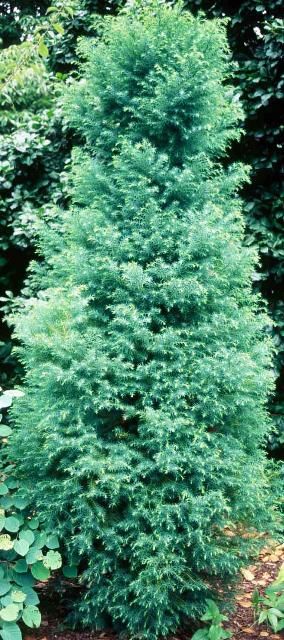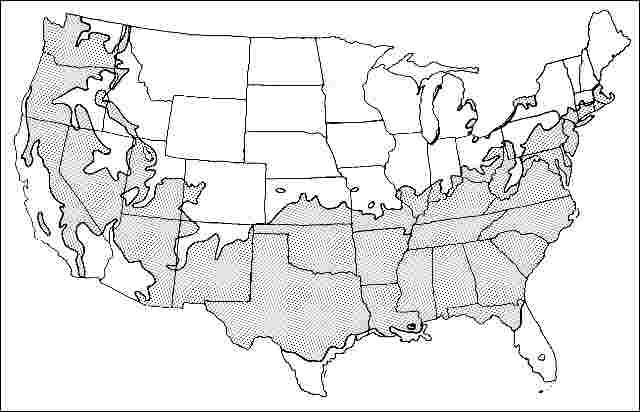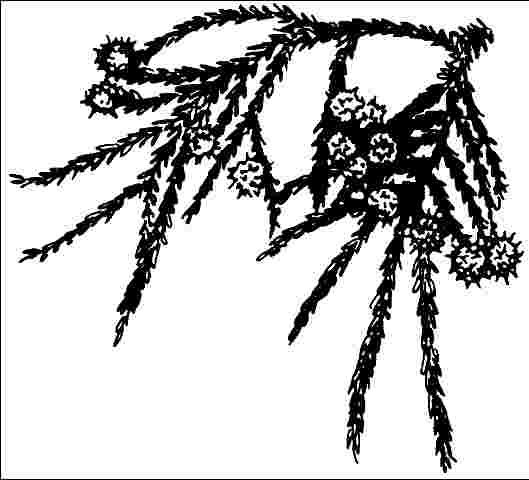Introduction
The tree keeps a billowy pyramidal form on one central trunk. It will reach a height of about 15 feet and spread about 10 feet. The reddish brown bark is ornamental, peeling off in long strips, and is the most pronounced characteristic on old trees. The foliage will become bronzed during the winter but greens up again in spring.

Credit: Ed Gilman, UF/IFAS
General Information
Scientific name: Cryptomeria japonica
Pronunciation: krip-toe-MEER-ee-uh juh-PAWN-ih-kuh
Common name(s): 'Elegans' Japanese cedar
Family: Taxodiaceae
USDA hardiness zones: 6A through 8B (Fig. 2)
Origin: not native to North America
Invasive potential: little invasive potential
Uses: Bonsai; specimen
Availability: not native to North America

Description
Height: 10 to 15 feet
Spread: 6 to 10 feet
Crown uniformity: symmetrical
Crown shape: pyramidal, oval
Crown density: dense
Growth rate: slow
Texture: fine
Foliage
Leaf arrangement: spiral (Fig. 3)
Leaf type: simple
Leaf margin: entire
Leaf shape: awl-like
Leaf venation: none, or difficult to see
Leaf type and persistence: evergreen
Leaf blade length: less than 2 inches
Leaf color: green, blue or blue-green
Fall color: copper
Fall characteristic: not showy

Flower
Flower color: unknown
Flower characteristics: not showy
Fruit
Fruit shape: round
Fruit length: .5 to 1 inch
Fruit covering: dry or hard
Fruit color: brown
Fruit characteristics: does not attract wildlife; not showy; fruit/leaves not a litter problem
Trunk and Branches
Trunk/bark/branches: branches droop; very showy; typically one trunk; thorns
Pruning requirement: little required
Breakage: resistant
Current year twig color: green
Current year twig thickness: medium
Wood specific gravity: unknown
Culture
Light requirement: full sun
Soil tolerances: sand; loam; clay; acidic; well-drained
Drought tolerance: high
Aerosol salt tolerance: unknown
Other
Roots: not a problem
Winter interest: no
Outstanding tree: yes
Ozone sensitivity: unknown
Verticillium wilt susceptibility: resistant
Pest resistance: sensitive to pests/diseases
Use and Management
Provide an acid soil and protection from winter winds. Locate the tree so air circulation is good, particularly during summer to help prevent leaf blight. It thrives best with afternoon shade in southern part of its range. A number of other cultivars are available varying in growth habit and ability to hold green foliage color in the winter. Cryptomeria is tolerant of compacted soil and performs well in parking lots and other tough, urban sites with some irrigation in drought. It makes a wonderful accent, screen, or border tree for small properties due to the compact, dwarf habit.
Propagation is by cuttings which root slowly.
'Yoshino' holds green foliage color in the winter.
Pests
Mites can infest the foliage.
Diseases
Leaf blight and leaf spot are two problems. Leaf blight often causes much of the interior foliage to brown, creating an unsightly specimen. Fungicide sprays help prevent the disease, as does placing the tree so it receives early morning sun to dry the foliage. Keep the foliage as dry as possible.